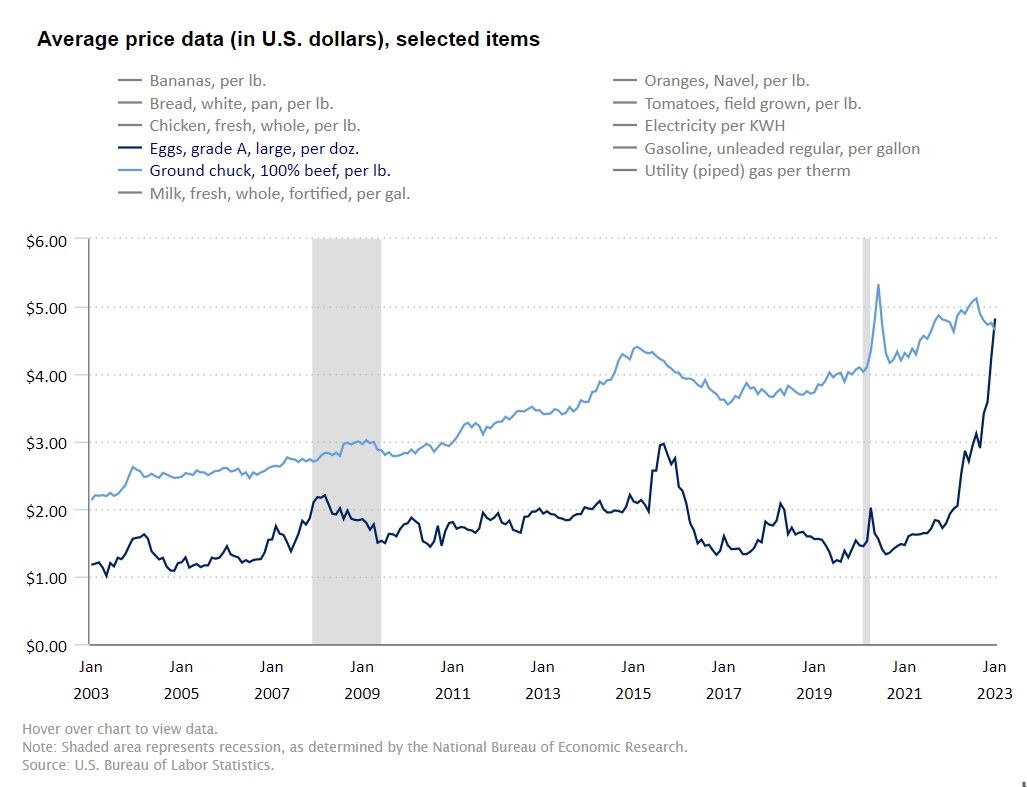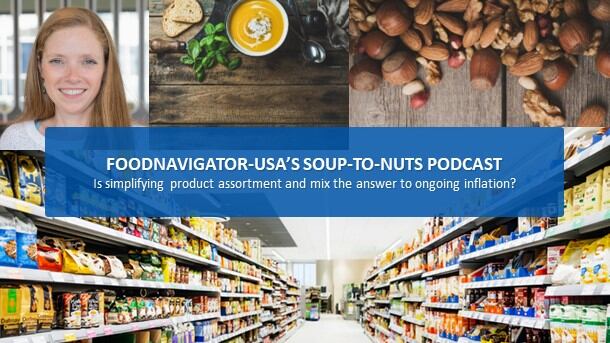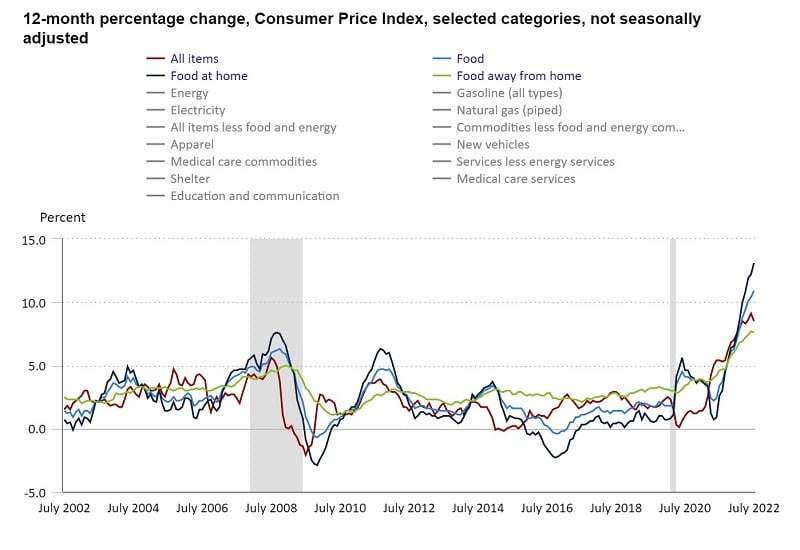Coming in at 0.4% in January, the seasonally adjusted month-over-month increase in prices for food at home is far lower than the 1.3% jump last July from June, but the unadjusted year-over-year increase remained stubbornly in the double digits at 11.3%, the Bureau of Labor Statistics reports.
This is an inverse of overall food prices, which climbed 0.5% in January from December after slowing to 0.4% in December from a month-over-month increase of 0.6% November. The acceleration last month boosted inflation for overall food prices to 10.1% for the full year. An accelerated increase in the price of food away from home contributed to the bump. It rose 0.6% in January after slowing to 0.4% in December from 0.5% in November and 0.9% in October.
The rise in prices for food consumed at home came from four of the six major grocery store food group indexes, including a month-over-month 1% increase in the index for cereals and bakery products and a 0.7% month-over-month increase in the index for meats, poultry, fish and eggs. For the full year, cereal and bakery products jumped 15.6% and the index for meats, poultry, fish and eggs climbed 8.1%.
Egg prices cooled in January, but are up 70.1% for the year
The biggest driver by far within the latter index was the price of eggs, which rose 8.5% in January from December after seasonal adjustment. While this was a significant and expected drop from the commotion-causing 11.1% increase last month from December, the slowdown did little to ease a staggering 70.1% year-over-year increase.
The double-digit jump in December was attributed in part to seasonal demand related to holiday baking and cooking, American Egg Board CEO Emily Metz told FoodNavigator-USA last month, when she also predicted prices should ‘normalize’ after the end of the holidays.
And while inflation for the category slowed compared to December, the 8.5% increase in January was far above the 2.3% reported in November over October.
No other food group in saw prices rise anywhere near the magnitude of eggs in the month or the year, according to the data. The next highest increase among measured foods consumed at home for the year was margarine, which climbed 44.7%, followed by a 26.3% increase in butter, a 20.4% in flour and prepared flour mixes and 19.1% increase the price for other dairy and related products, according to the Labor Department.
The jump in egg prices translates to consumers paying on average $4.82 per dozen of grade A, large eggs in January – up from $1.18 last January. This is even higher than the price of ground chuck 100% beef, which has climbed steadily – if not as dramatically as eggs of late – from $2.13 a pound last January to $4.64 per pound last month.
High egg prices are an opportunity, challenge for industry
The high price of eggs is creating challenges and opportunities across the food industry.
For example, they inspired a light-hearted campaign by Vital Farms announced this morning, in which the pasture-raised egg company jokes that eggs are “practically a luxury item,” making them an “eggs-quite way to say ‘I love you.’” As such, from Valentine’s Day through Feb. 24, the company is offering a chance to win a “lifetime supply” of eggs in exchange for a photo of creative marriage proposals involving eggs.
As part of the Valentine’s Day-themed campaign, the company created a video spoof of classic jewelry store engagement ring commercials in which the person proposing on one knee holds out a box with a “big, beautiful brown Vital Farms egg” instead of an iconic diamond ring.
Avian flu fallout continues
Despite the silly spot, Vital Farms’ CEO Russell Diez-Canseco says he takes seriously the rise in egg prices and supply shortages that have flummoxed consumers in recent months.
In an open letter posted Feb. 14, he attributed higher prices and fewer cartons of available eggs to the latest round of avian influenza, which “has led to tens of millions of egg-laying hens being killed.”
While he notes this is not the first time the industry has experienced a surge in avian flu, he said, “the most recent variant is particularly contagious and harmful to the birds.”
He added the “most meaningful way” that Vital Farms can address high egg prices and shortages is bringing more eggs to market.
“As we have every year since we started in 2007, we’ve gradually added the best farmers around to our network. Our farmer support teams work to help get their operations up and running so that we can get more high-quality eggs to you,” he told readers.
He added: “While the rest of the industry is shipping fewer eggs this year, we are delivering more eggs than we did a year ago. This is a big deal in this environment, and it’s thanks to the over 300 family farms that produce your eggs.”
Sustained high prices open the door for egg replacement ingredients
Lingering high prices for eggs likely will prompt some CPG manufacturers to seek less expensive alternative ingredients as part of ongoing cost-management practices.
Innovations in plant-based options hold promise, including options from InnovoPro, which uses chickpea protein as a base to replicate many functions of eggs while maintaining a clean label.
Others, like The EVERY Co, which uses synthetic biology to produce a one-to-one replacement protein for egg whites, also promise a clean label.
While the American Egg Board acknowledges many alternative egg ingredients exist, it says none deliver the same breadth and full function of benefits as real eggs, which can help keep ingredient decks short and are familiar to consumers.




